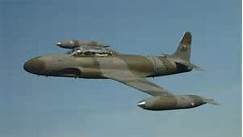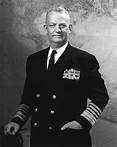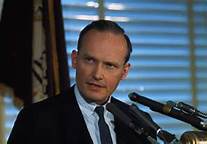
Note: Suppose you were a newly elected President and during your transitional briefings you were told by the outgoing President and your intelligence and national security agencies of an operation that had been in the making for a year. The operation involved thousands of anti- Castro Cubans being trained and equipped to invade Cuba and re-take it from Castro, who himself had led a revolt a couple years earlier successfully overthrowing the corrupt, U.S. supported dictator Batista and setting up his own communist style regime on the island 90 miles from the coast of Florida. You are being told that the operation, despite its size, is a covert one that can be plausibly denied by the United States. You are also told that its chances for success are very high and that when the Cuban people see a successful rebellion starting against Castro they will rise up against him as well. You are as opposed to communism as the men briefing you but you are also aware that in supporting this operation the United States is technically violating international law and should regular U.S. military become involved you for sure are. You also know it violates other U.S. laws and rules. Nevertheless, the greater good prevails, and you go along with it and when the time comes to approve the tactical plan for the “covert” invasion to take place you do so, with the repeated stipulation no regular U.S. military be involved. Then the reports start coming in. Something has gone horribly wrong. The invading brigade is trapped on the beaches of Cuba and being cut to pieces. Your intelligence and military people are suddenly telling you that you must intervene NOW with the U.S. military or the invasion will fail. The choice presented is to violate law, both domestic and international, and the sovereignty of another nation even worse than you already are, knowing full well the duty of the Executive branch of U.S. government is to enforce the law, or to become known as the President responsible for the worst cold war disaster in the nation’s history. Those are your options…what do you do? In this blog I am presenting the hidden story of the disaster at the Bay of Pigs, the ramifications of which are still felt today. To help you here are the meanings to a few terms used in the article: “Operation Zapata” was the CIA’s code name for the Bay of Pigs operation. The “B-26” airplane was a twin engine, intermediate range bomber used in WW II. The Defense Dept OK’d the use of a number of these planes by the CIA for this operation. “Sterilized” simply means the equipment, in this case the B-26es, had all their identifying markings and serial numbers removed to ensure plausible deniability for the U.S. The “T-33” was a jet fighter built by Lockheed in the late 1940s. At the time of the Bay of Pigs Castro’s air force consisted of 10 T-33s, 7 of which were destroyed on the ground by the CIA B-26es in a pre-invasion attack on April 15. At the time of the invasion two days later Castro had three T-33s left. Now… to the hidden story of Operation Zapata and why the CIA’s Cuban brigade failed…MA


At about 1:00 AM on Monday, April 17th, 1961 a Colonel in the U.S. Air Force was sleeping at his home in Virginia when he was awakened by a phone call. Over the sound of running airplane engines on the other end of the line the Colonel recognized the voice; an old friend was calling from Nicaragua. The friend was very upset. He told the Colonel that the dawn airstrike that was to have been launched to support the 1400 strong anti-Castro Cuban brigade about to hit the beaches at the Bay of Pigs had been delayed. An order had been received to hold the planes. He went on to tell the Colonel that anything later than a 2 AM departure by the sterilized B-26es carrying out the strike would mean they would not be able to arrive by dawn when the brigade’s beach assault was scheduled. As a result Castro’s remaining air force of 3 ancient T-33s would not be destroyed on the ground as per the plan approved by President Kennedy on April 16th when he gave final authorization for the assault. The T-33s would be alerted when the brigade landed, would be free to take off unopposed and would attack the brigade and its supply ships from the air.

The friend on the phone with the Colonel was the CIA commander at Puerto Cabezas, Nicaragua, where the sterilized B-26es were based. He urged the Colonel to call General Charles Cabell, the CIA’s Deputy Director, at the Operation Zapata office and demand the immediate release of the B-26es.The CIA commander told the Colonel that the Cubans piloting the B-26es were so eager to depart that they would leave without orders to do so if the commander just got on his bike and disappeared for a few minutes. Later both the commander and the Colonel wished he had done just that.
Hanging up the phone the Colonel looked at his watch. There was less than an hour until 2 AM. He called General Cabell but was unable to reach him. Cabell’s senior, CIA Director Allen Dulles was out of the country and also unreachable. The Colonel, knowing that Kennedy had approved the airstrikes as a vital part of the plan, then called the Zapata office again and suggested that the B-26es be released on Kennedy’s orders. He was told that the situation was being run by the President’s Special Assistant for National Security Affairs, McGeorge Bundy, Deputy Director CIA Charles Cabell and Secretary of State Dean Rusk. The Colonel knew that unless the B-26es were allowed to leave very soon the anti-Castro brigade would be defeated and the entire plan would fail. Yet he could find no one willing to make the phone call to his friend to authorize the release of the planes, even though it was exactly per Kennedy’s wishes that it be done. As a result the 3 antiquated jets of Castro’s air force controlled the skies over the brigade’s landing zone, sank the brigade’s supply ships, raked the brigade on the beach with gunfire and shot down 16 B-26es that did finally arrive late on the scene. The B-26 was no match for a T-33 in the air.

As it was becoming obvious that the CIA’s Cuban brigade was failing in its objectives, the CIA and the Joint Chiefs of Staff prevailed on Kennedy to intervene with U.S. military support to save it. In an emergency meeting called just before midnight on April 17th Kennedy, along with Vice President Lyndon Johnson, Secretary of State Dean Rusk and Secretary of Defense Robert McNamara met with Joint Chiefs of Staff Chairman Lyman Lemnitzer, The Chief of Staff of the Navy Arleigh Burke and The CIA’s Richard Bissell. The CIA and military people requested the meeting to pressure JFK to authorize the use of U.S. Navy jets and a destroyer to help the brigade overcome Castro’s forces. Bissel made an impassioned plea to the President for assistance from the military. Kennedy reminded them that all along he had stated he would not use regular U.S. military in such operations. The meeting became heated with Burke becoming angry. Kennedy, however, still held his ground.
The CIA and the Chiefs had JFK between a rock and a very hard place; he either authorized the use of themilitary to save the operation or the brigade would fail and he would appear to be responsible for the worst U.S. Cold War disaster to that point in time. They thought Kennedy would go along. They were wrong. Kennedy knew that the use of the U.S. military to invade another nation with whom we were not at war violated international law. He also knew that the CIA was already in violation of its founding law, the National Security Act, by engaging in paramilitary operations in the first place and that earlier National Security Council directives forbade the use of regular U.S. military forces for such operations in peacetime. Because of these things, and probably because he sensed he was being trapped into this escalation, Kennedy refused to authorize U.S. military intervention to save the Cuban brigade. Two days later some 1100 of the CIA’s brigade surrendered to Castro’s forces and the disaster that was the Bay of Pigs became President John Kennedy’s first experience at trusting the CIA. It was a lesson he would never forget.

The Colonel who took the phone call from the CIA officer in Nicaragua and tried in vain to find a responsible party to release the B-26es was none other than L. Fletcher Prouty. He is the author of two books that lay open how the CIA operates as well as expose much of its history in covert operations. The books are “The Secret Team: The CIA and its Allies in Control of the United States and the World” and “JFK: The CIA, Vietnam and the Plot to Assassinate John F. Kennedy”. For 9 years, from 1954 to 1963, Prouty served as Focal Point officer for contacts between the CIA and the Department of Defense on matters pertaining to military support for the CIA’s Special Operations. (“Special Operations” is a CIA euphemism for its covert and often paramilitary operations, such as the Bay of Pigs invasion) His job as Focal Point officer included briefing people such as the Secretary of Defense and the Chairman of the Joint Chiefs of Staff as well as other Defense Dept officials on the money, materiel and military requirements for the various CIA operations planned around the world in order to gain their support for the Agency’s operations. Though he represented the CIA in these briefings, Prouty was not CIA himself, but a career Air Force pilot and officer. As such he never took the Agency security oath. During these years Prouty’s duties took him to over 60 nations, as well as CIA stations and covert operations the world over. Because of the post he held Prouty’s knowledge of the CIA, how it operates and what it did is extensive and he is uniquely qualified to report on circumstances such as the Bay of Pigs scenario described above. As in the Bay of Pigs operation, he often was present at and therefore observing what he describes in his books.

Following the Bay of Pigs disaster, as Prouty reports in “JFK: The CIA, Vietnam and the Plot to Assassinate John F. Kennedy”, Kennedy took public responsibility for the failure of the CIA’s Cuban brigade. Privately, however, he felt he had been misled and lied to by the CIA. He had approved a plan calling for airstrikes to take out the weak Cuban air force on the ground but someone had delayed the strikes thus causing the failure of the mission. He then was heavily pressured to allow the use of regular military forces to salvage the CIA’s brigade, something he successfully resisted. It was almost as if the B-26es were deliberately delayed to force Kennedy’s hand in allowing the use of the regular military in the operation.
To get to the bottom of what occurred, on April 22, 1961 Kennedy appointed a 4 person group to look into the matter. The group consisted of CIA Director Allen Dulles, Navy Chief of Staff Admiral Arleigh Burke, Army General Maxwell Taylor and JFK’s brother, Attorney General Robert Kennedy. Over the next seven weeks the group met, interviewing key witnesses and participants in operation Zapata. Every evening after the meetings Robert Kennedy would see his brother and report on the day’s findings. On June 13 General Taylor submitted the group’s findings to the President in the form of a long letter. It was following this report that JFK fired the Director and Deputy Director of the CIA, Allen Dulles and General Charles Cabell as well as the Deputy Director for Plans and the CIA official directly running Zapata, Richard Bissell. Shortly Kennedy followed that up with National Security Action Memorandum #55 to the Joint Chiefs of Staff which I described in an earlier blog. In NSAM #55 Kennedy told the Chiefs that he held them as responsible for advice during cold war operations as he would if the country were at war; a direct effort to depower the CIA of its covert operation capabilities. With all this understood, the pressures Kennedy was under and the threat he represented to the intelligence community and the war planners perhaps becomes a bit clearer. Kennedy did not fall for the trap during the Bay of Pigs and refused to use regular military to salvage the Cuban Brigade. But that didn’t mean that those opposing him in the military industrial complex and the secret team were through trying, as we shall see.
There is one last peculiar aspect to the whole Bay of Pigs affair that bears mentioning. After the special group investigating the Bay of Pigs filed its report with the President as to the causes of the debacle, the report itself vanished and for many years its whereabouts was unknown. Many doubted the existence of the report in the first place. Then in 1979 an author named Peter Wyden published a book called “Bay of Pigs: The Untold Story”. In his book Wyden makes frequent mention of the special group’s report to the point where it was obvious that he had access to it in writing the book. Suddenly the long missing report had surfaced. Around the same time Wyden’s book was published Kennedy’s former Special Assistant McGeorge Bundy published an article on the op-ed page of the New York Times called “The Brigade’s My Fault”. Fletcher Prouty speculates that Bundy had obviously read Wyden’s book and now felt the need to cover his tracks. According to Prouty, who possessed one of the few copies of the “long thought missing” report, in paragraph 43 the report states:

“At about 9:30 PM on April 16, Mr. McGeorge Bundy, Special Assistant to the President, telephoned General Charles C. Cabell of CIA to inform him that the dawn air strikes of the following morning should not be launched until they could be conducted from a strip within the beachhead.”
It was Bundy who had placed the phone call delaying the air strikes that in turn had caused the failure of operation Zapata and 18 years after the fact the proof had surfaced in the form of the report. Obviously in using the word “Brigade” in the title of his article Bundy is referring to the CIA’s Bay of Pigs brigade. Yet the article he wrote for the New York Times, despite its title, says nothing about the Cuban brigade and instead deals with the Cuban Missile Crisis which took place a year and half later. Who knows what Bundy had in mind in writing such a confusing article but it certainly wasn’t to step up and be responsible for the failure of the Cuban brigade as the article’s title would seem to indicate.
Also, the question of whether or not the CIA was planning all along on trying to force President Kennedy into allowing the use of U.S regular armed forces in operation Zapata was clarified with the discovery in 2005 of a CIA document dated November 15, 1960. The document states the conclusion that the invasion was “unachievable except as joint Agency/DOD action.” (DOD means Dept of Defense). The Agency was aware all along that the invasion by the Cuban brigade alone would likely fail and did their best to trap JFK into agreeing to use the regular military to ensure its success.
They severely misestimated their man.


2 Responses
This is my first time pay a quick visit at here and i am truly happy to read all at single place.